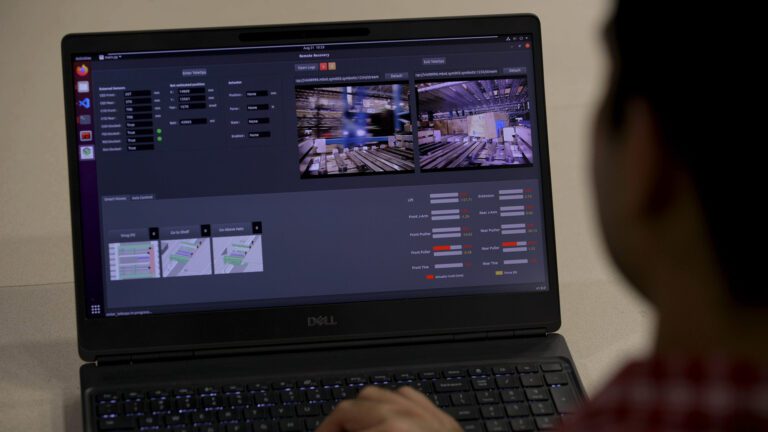Video
Teleoperations: Remote Controlled Assistance for Robot Efficiency

Video

SymBot mobile robots equipped with onboard cameras enable remote operators to help bots quickly recover from errors and learn self-recovery techniques that increase system efficiency and significantly reduce manual interventions over time.
VIDEO
Symbotic robots navigate their environment, autonomously traveling at up to 20+ miles per hour — across decks, into driveways and aisles, and around obstacles. They navigate through warehouses where conditions vary greatly.
And when they run into a problem, like a spilled substance on the deck, a case with an open flap or damaged packaging, or even a case that’s misaligned, they can usually recover. On rare occasions, when a bot is unable to recover on its own and complete its task, operators must shut down a small section of the system and enter the structure to correct the issue.
Teleoperations allow humans to help a stalled bot recover from outside the structure, quickly and efficiently without shutting down any part of the system. The operator guides the bot using software and on-screen controls.
An operator can replay the bot’s attempt to recover on its own. Thanks to onboard cameras, operators can see what the bot “sees” from different angles.
Guiding the bot’s movements along ten different axes of motion, an operator helps the bot transfer the case into its payload bay or onto a shelf.
It is challenging to transition between fully autonomous and manual mode in a highly complex system.
This requires concurrent engineering across the full technology stack – including software, user interfaces, network protocols, vision processors and the mechanics of the mobile bot itself, including the actuators, motors, and controllers.
The types of problems we solve at Symbotic are just orders of magnitude more interesting, complex, and varied. It’s really challenging and engaging work.
Ted Symbotic Fellow
Real-time communications are essential to Teleoperations. The operator needs accurate, real-time video and sensor data, like motor forces, to precisely control the bot’s movements. An off-premise operator can do this thanks to an ultrawideband communications network equipped with robust security protocols.
Innovation is in Symbotic’s DNA. Teams come together to solve problems that have never been solved before. There’s a shared sense of purpose to reimagine the supply chain and push the limits of what can be done.
Pat Senior Software Development Manager, Symbotic
Nearly ninety percent of recovery situations can now be corrected with teleoperations, significantly reducing the number of times a human must enter the structure — and helping Symbotic reach its goals of zero downtime and high efficiency.
Further, the learnings from teleoperations interventions are analyzed for patterns so that bots can be programmed to leverage that knowledge for more self-recoveries and fewer interventions over time.
Shape the future of robotics